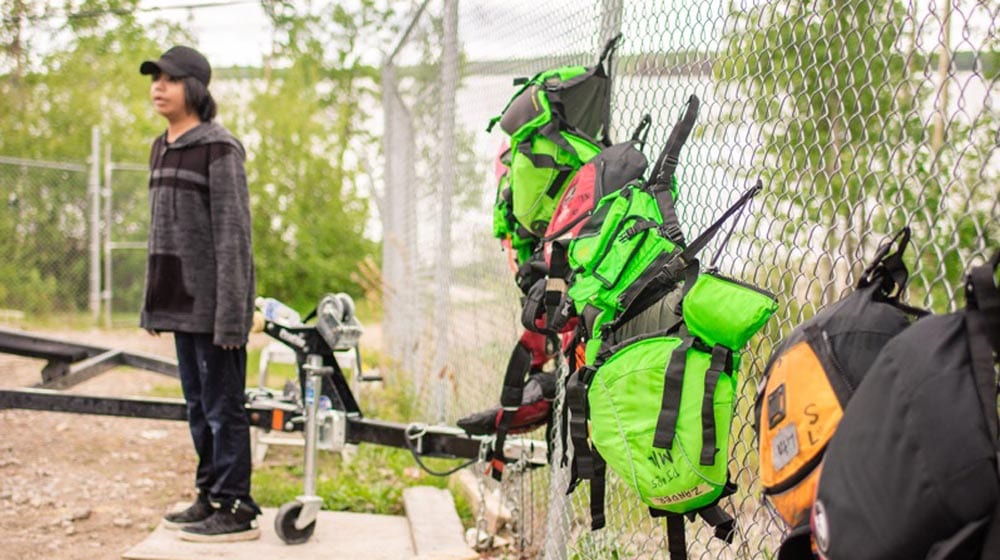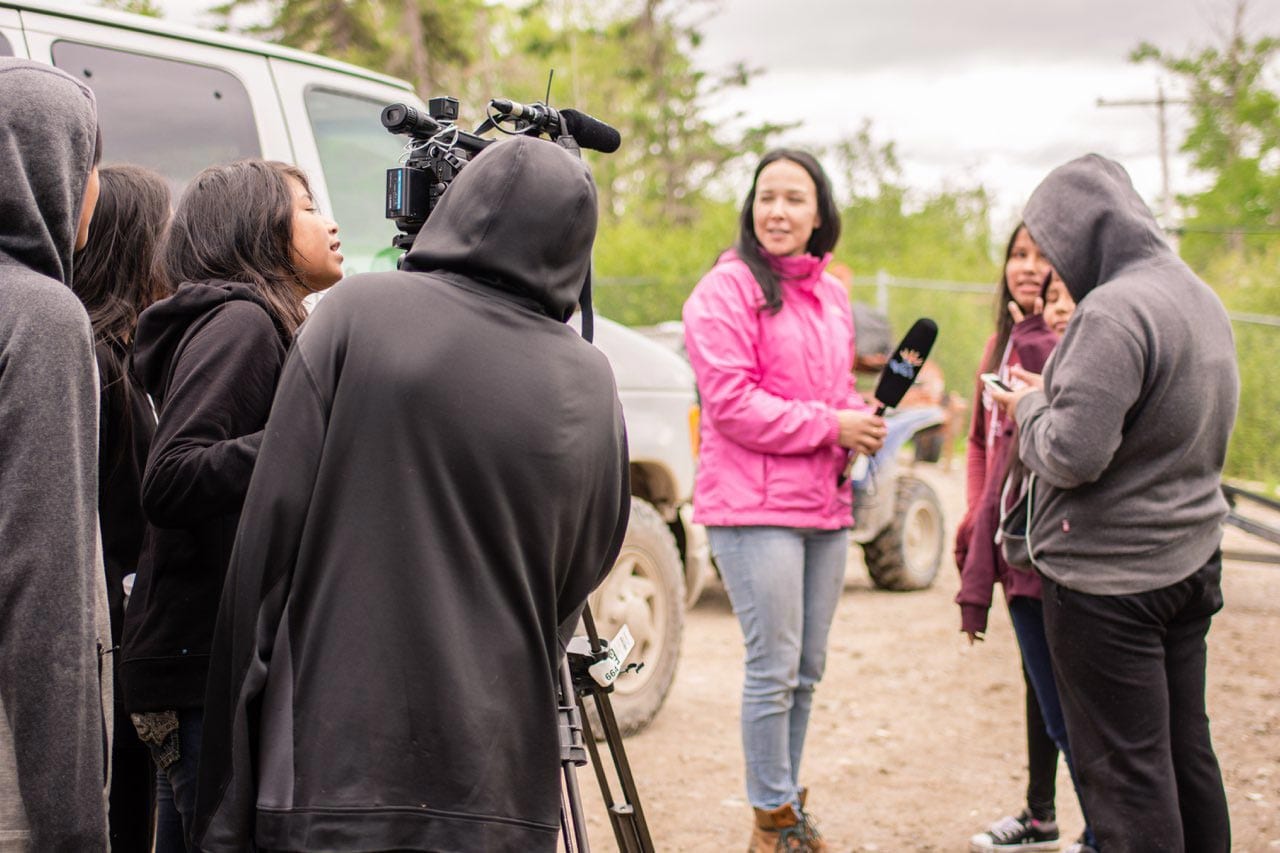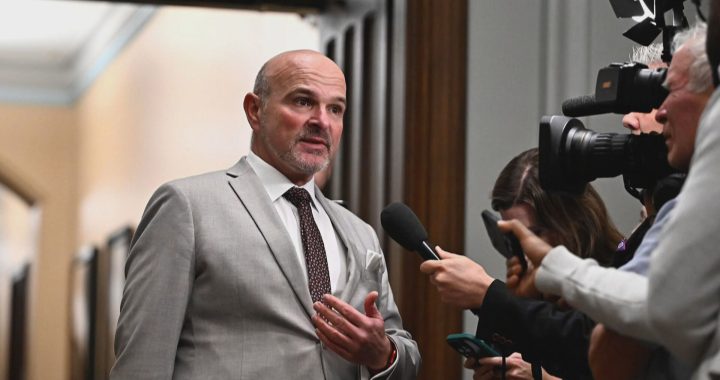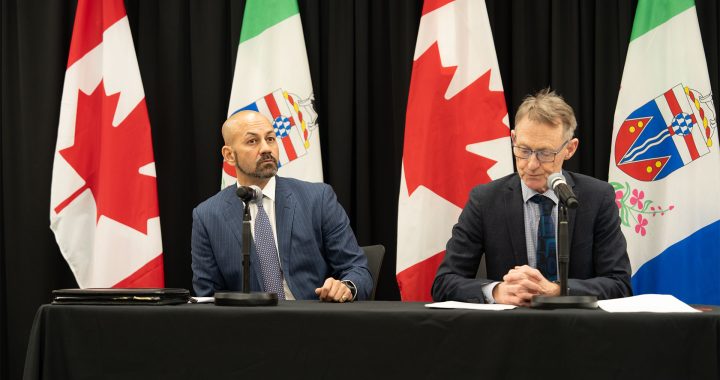Ontario Provincial Police Sgt. Chris Amell is spending his Saturday morning knocking on doors in Pikangikum First Nation.
“I’m here for your granddaughters,” he tells one person who answers.
Having the police come to your door isn’t always good news.
But Amell is not driving a police cruiser nor is he taking anyone to jail.
In fact, he’s hoping to prevent that from happening – by picking up youth participants who need a ride to an event coordinated by Project Journey.
“From a policing perspective although it’s not answering calls for service, it’s an investment so that we don’t have to answer calls for service,” he says.
Amell has worked in Pikangikum since 2007.
He’s been running Project Journey since it started in 2013.
“A response to a lot of the tragedies that were occurring back in 2007 to 2009, there was a high rate of suicide and the police felt we were in a position to do more in terms of supporting the community to help overcome some of those challenges,” Amell tells APTN News.
“When they’re given the opportunities to make healthy choices they… make healthy choices”
The five-year project funded by Public Safety aims to reduce youth crime and solvent abuse in the remote First Nation. The program, delivered by the Ontario Provincial Police, is scheduled to end this year.
Amell says Project Journey provides positive alternatives for the youth — who make up a large portion of the community.
“When they’re given the opportunities to make healthy choices they almost 100 per cent of the time choose to make healthy choices,” he says.
Pikangikum is about 500 km northwest of Thunder Bay and is only accessible by plane and boat.
The community has a population of about 2,400 — and 97 per cent of the community speaks fluent Anishinaabemowin or Ojibway – and is the first language there.
Pikangikum has struggled with social issues like suicides and addiction.
“It gives the youth a lot of opportunities and more experiences in life”
The chief coroner conducted a review after 16 suicides occurred between 2006 – 2008. All of them were children and youth between 10-19 years old.
Tyra King is used to Amell knocking on her door now.
“Yeah, it happens a lot,” she says laughing.
The 16-year old got involved with Project Journey when it first started.
“It gives the youth a lot of opportunities and more experiences in life,” King says.
King is participating in a girls’ retreat at the school when APTN meets her. It’s one of the many positive experiences she’s had through regular participation with Project Journey.
“I have my hair styling certification, I met Justin Trudeau, traveled a lot and went to conferences,” King says.
She said it’s important to have these opportunities.
“I faced a lot of alcoholism in my life and I, and the youth face that too a lot of times and a lot of losses of their loved ones. It affects them emotionally, physically and mentally,” says King.
Amell says removing barriers that prevent participation is an essential part of the program’s success.
“Whether it’s a pair of boots to do winter activities, whether it’s outdoor gear to go canoeing,” he says.
“Just making sure they have everything they need so the only choice they really have to make is whether or not to participate.”
Cst. Clayton Kenny is with the Pikangikum Police and has worked in the community for two years.
On the day APTN meets him, he’s off-duty and helping a group of kids prepare for a canoe trip. It will be the second one he’s been on with Project Journey.
“I’ve worked in a number of communities where this is actually the first time I’ve been able to do a program like this and work with the youth,” says Kenny.
He believes land-based activities can empower youth.
“As First Nations people they are part of the land,” he says.
“They’re allowed to be themselves when they’re on the land and realize that they do have something to offer, some skills that they can excel in.”
Rusty Keeper is the Youth Outreach Worker for Project Journey. He’s also planning to paddle along on the canoe trip.
He knows the challenges that kids face in Pikangikum.
“The youth were easily influenced to go start sniffing early. There was a lot of it growing up,” Keeper says.
“I mostly stayed away from it but I saw a lot of other kids get turned, you know.”
Keeper has also seen the impacts Project Journey has had on the youth.
“I think it’s good for it to be here you know, so the kids can have someone to go to, you know to talk to someone.”
“We’re seeing a reduction in youth crime, we’re seeing a reduction in solvent abuse”
(Young people in Pikangikum take an interest in Willow’s camera during an interview)
What will happen to Project Journey at the end of this year is still being worked out, according to Amell.
Project Journey has developed partnerships with the community’s health and education authority organizations to possibly take over programming in the community.
But one thing is clear.
“We’re seeing a reduction in youth crime, we’re seeing a reduction in solvent abuse,” says Amell.
And that’s not all.
“We’re also seeing an increase in positive relationships between peers, between participants and their families, between participants and the community in general,” he says.
Kenny says those connections are key to a safer community.
“It’s very important to keep forming positive relationships especially with police because we do work for them and we do need those positive relationships to continue.”
For King, who wants to be a makeup artist, Project Journey has opened her eyes to the possibilities ahead.
“It gave me a lot of confidence in myself and it gave me a voice and it gave me opportunities and I’m very grateful to have it in my life,” she said.












